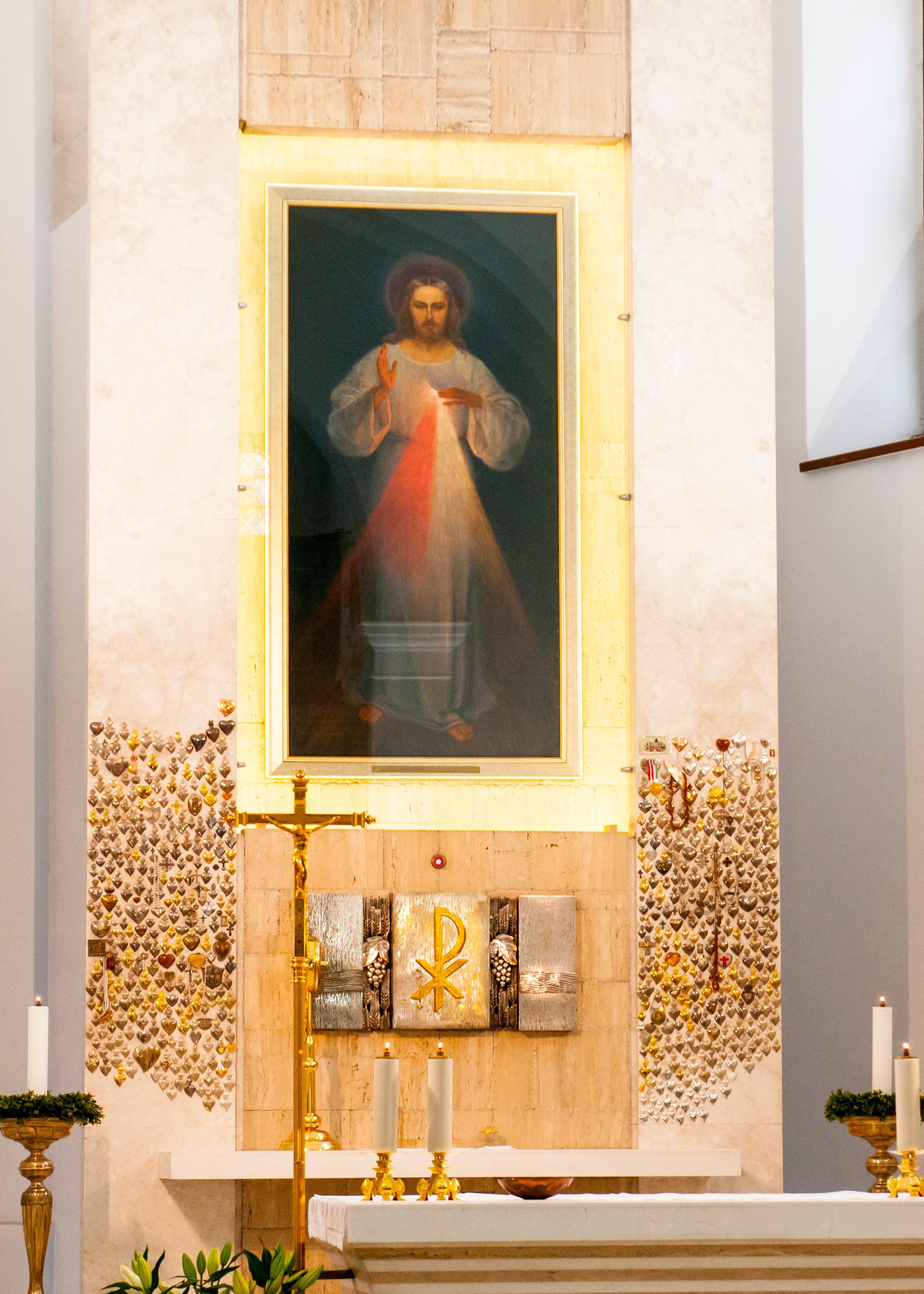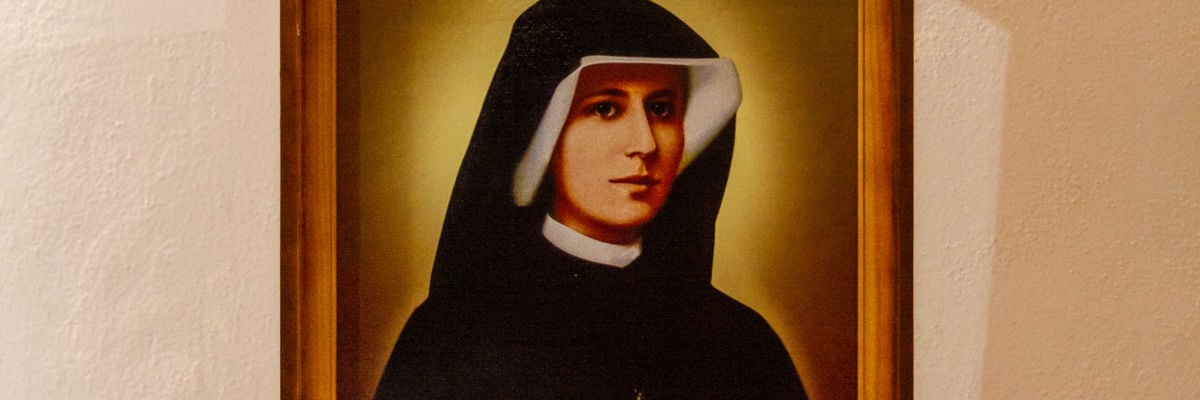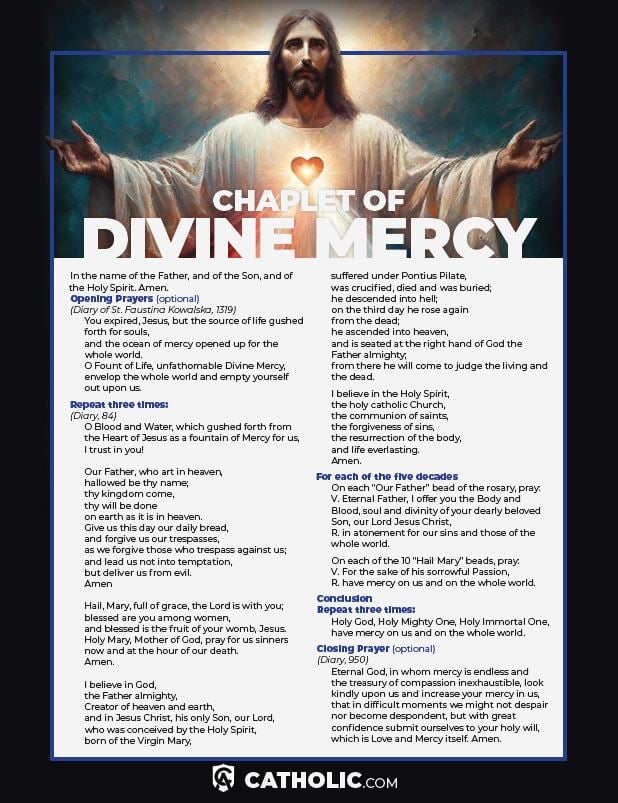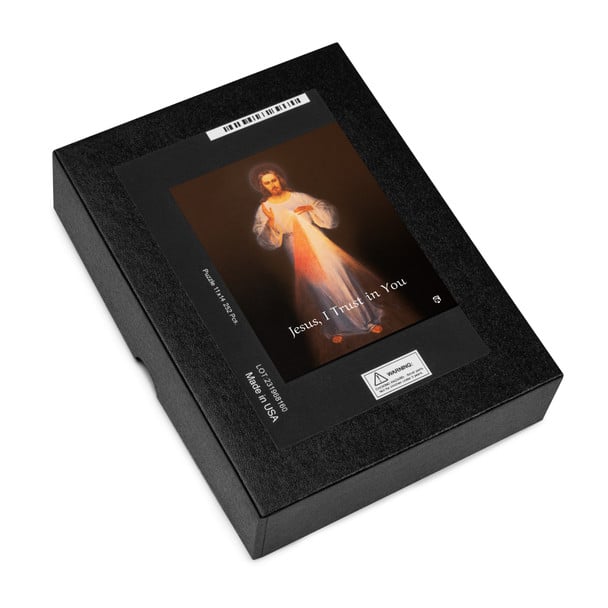
Who Was St. Faustina?
Often called the Apostle of Divine Mercy, St. Faustina Kowalska has left an indelible mark on the Catholic Church, beginning with the private revelations she received from Jesus Christ, the related spiritual writings she composed, and the worldwide devotion to God’s mercy the Lord commissioned her to proclaim. Her humble life, shaped by remarkable encounters with Jesus, continues to inspire millions to seek God’s infinite mercy and trust in his love. Let’s delve into her life, the preeminent message of Divine Mercy, and why Faustina is one of the most beloved saints in the Church today.
Early Life and Calling to Religious Life
Maria Faustina Kowalska was born on August 25, 1905, in the small village of Głogowiec, Poland. She grew up in a poor but devout Catholic family, the third of ten children. From an early age, Faustina felt a deep desire to dedicate her life to God. Despite financial challenges, she persevered and, in 1925, Jesus enabled her to enter the Congregation of the Sisters of Our Lady of Mercy.
In the convent, Faustina received the name “Sr. Maria Faustina of the Blessed Sacrament.” Her work was simple—she often served as a cook, gardener, or porter—but her spiritual life was extraordinary. It was during these years she began receiving messages from Jesus, which she recorded in her now-famous Divine Mercy in My Soul: Diary of St. Maria Faustina Kowalska.
The Divine Mercy Message and Miracles
In the evening of February 22, 1931, on the First Sunday of Lent, Jesus directed Faustina to have painted an image according to how he appeared to her that night: with rays of red and white light streaming from his heart. This image, now known as the “Divine Mercy Image,” can be found in churches, homes, and schools across the world.

The image, which serves as reminder of God’s mercy, has an inscription at the bottom: “Jesus, I trust in You.” The rays represent the blood and water that flowed from Christ’s side during his crucifixion, symbolizing the sacraments of the Eucharist and Baptism, respectively. Jesus promised that anyone who venerates this image would receive great graces.
Faustina also documented several related miracles, including one in which she bilocated to the bedside of a tormented man near death. She prayed the Chaplet of Divine Mercy and helped the man find peace and reconciliation with God in his final moments. These accounts, coupled with her visions, underscore the importance of trusting in God’s mercy, no matter how far one has strayed.
Devotion to Divine Mercy and the Chaplet
The Chaplet of Divine Mercy, which Jesus gave to St. Faustina, is the central prayer of this devotion. The chaplet is recited using rosary beads and invokes God’s mercy for individuals and the whole world. As Jesus told Faustina, “My Heart overflows with great mercy for souls, and especially for poor sinners” (Diary, 367).
Hour of Mercy
The chaplet is traditionally prayed each day at “the Hour of Mercy,” 3 p.m., when Jesus died on the Cross. Because of this hour’s sacred significance, Jesus told Faustina, those who pray during this time will experience the full power of his mercy:
In this hour, I will refuse nothing to the soul that makes a request of me in virtue of my Passion” (Diary, 1320).
Download PDF Prayer Card
Divine Mercy Novena
There is also the Divine Mercy Novena, which can be prayed any time throughout the year, but especially, Jesus said, beginning on Good Friday and culminating on Divine Mercy Sunday, the Sunday after Easter. This novena, along with the Litany of Divine Mercy, leads to a deeper reflection on the mercy of God and serves as a preparation for Divine Mercy Sunday.
For Spanish-speaking Catholics, a common prayer from this devotion is the Oración de la Divina Misericordia:
Oh Sangre y Agua, que brotaste del Corazón de Jesús como una fuente de misericordia para nosotros, en Ti confío.”
St. Faustina’s Feast Day and Canonization
St. Faustina’s feast day is October 5, the day she died in 1938. She was only thirty-three, the same age as Christ when he was crucified. Despite her young age, Faustina’s short life was filled with profound spiritual insights and also suffering, which she offered for the salvation of souls.
On April 18, 1993, Pope St. John Paul II beatified Faustina, and, just seven years later, on April 30, 2000, he canonized her as the first saint of the new millennium. During her canonization, the pope proclaimed the Sunday after Easter as Divine Mercy Sunday, fulfilling Jesus’ request to Faustina.
What Is St. Faustina the Patron Saint of?
St. Faustina is known as the patron saint of Divine Mercy or, more formally, the Patron Saint of Mercy. Through her life and writings, and especially in her Diary, she has taught the world about the depths of God’s merciful love. Jesus Himself entrusted her with the mission of spreading his message of compassion and forgiveness, making her a powerful advocate for sinners seeking reconciliation with God.
The Diary of St. Faustina
St. Faustina’s most enduring legacy is her spiritual journal, Divine Mercy in My Soul, commonly known as the Diary of St. Faustina. This Diary contains her personal reflections, visions, and conversations with Jesus, offering deep insight into the nature of God’s merciful love. Many Catholics turn to this Diary for spiritual guidance, seeking to understand how to trust more deeply in God’s love.
Reading Faustina’s Diary is a journey into her intimate relationship with Jesus. In it, Jesus says, “Today I am sending you with my mercy to the people of the whole world” (Diary, 1588). This call still resonates today, reminding us that God’s merciful love is central to the Christian life, including proclaiming the Gospel to the whole world (see John 3:16-17).
How to Read St. Faustina’s Diary
To read St. Faustina’s Diary profitably, start by prayerfully reflecting on small sections. Many find that praying the Litany of the Divine Mercy or meditating on the Divine Mercy Image enhances the experience of reading her words—and the words of Jesus to Faustina.
Miracles and Legacy
Several miracles are attributed to St. Faustina’s intercession. One of the most moving is of a young child healed after doctors had given up hope for a medical recovery. The child’s family prayed the Chaplet of Divine Mercy, and the child made a miraculous recovery.
The powerful message of Divine Mercy, of which St. Faustina is God’s Secretary, offers hope to all who struggle with sin, despair, and the fear of God’s judgment. As she wrote in her Diary, “The greater the sinner, the greater the right he has to my mercy” (Diary, 723). This quote summarizes Faustina’s life and mission: to reconcile souls and bring them ever closer to the heart of Jesus.
St. Faustina Kowalska’s life is a testament to the power of trust in God’s infinite mercy. Through her revelations, the Divine Mercy Image, the Chaplet of Divine Mercy, and her spiritual writings, she continues to guide Catholics toward a deeper understanding of Christ’s merciful love. Her feast day reminds us to embrace the mercy of God and share it with others.
As we reflect on her life and message, may we echo her words and place our trust in Jesus: “Jesus, I trust in You.” Through her intercession and devotion to Divine Mercy, we can grow in faith, hope, and love.
Additional Resources
Jimmy Akin breaks down the Catholic view on prophets and prophecy, clarifying how public revelation differs from private revelation in the Faith.
Quick Q & A – Must Catholics Believe Saint Faustina’s Revelations?
Focus Podcast – Two-Part Catholic Answers Focus Podcast on Divine Mercy with Fr. Hugh Barbour, O.Praem. (Part 1) and (Part 2)
Catholic Answers Guide to Divine Mercy
Catholic Answers Shop
Divine Mercy (Vilnius) – Framed Canvas 6″ X 11″ (Including frame: 9.5″ x 14.5″)
Divine Mercy Jigsaw Puzzle – Experience the fun of putting together this puzzle and contemplate the Divine Mercy while deepening your spiritual connection to Jesus.





